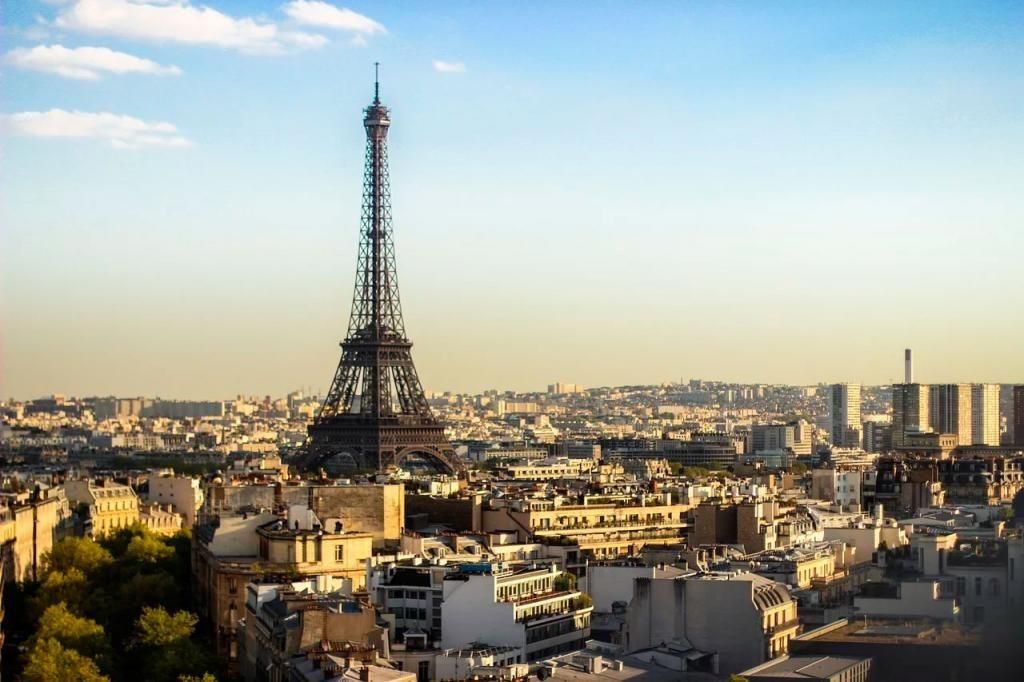
Tour Eiffel – Champs-Elysées
Categories : City Guide, published on : 2/13/25
It is impossible to visit Paris without seeing it: the Eiffel Tower dominates the city at 325 meters, and every hour of the night, its twenty thousand lights sparkle. Built for the 1889 World's Fair, it was originally supposed to be dismantled after twenty years. However, its creator, Gustave Eiffel, had other ideas and helped develop a weather observatory on the Tower. Later, experiments with wireless telephony, telegraphy, and antennas for radio transmission were launched. Initially, the monument endured for scientific and technical reasons. As a nerve center for coded communications during the two World Wars, it was in the second half of the 20th century that the Tower became a symbol of Paris. As you will see it today, the Tower underwent a major renovation in the 1970s and 1980s to lighten the weight of its structure.
You can choose to visit independently: by the elevators (expect a small queue), or by taking the stairs up to the second floor (115 meters high) but be warned, only if you're fit!
If you want to make your visit even more special, book a table at the restaurant on the first floor, Altitude 95, or at Alain Ducasse's famous Jules Verne, renovated in 2007, just above the second floor (note: reservations are only made online: www.lejulesverne-paris.com).
Another option is to join a tour organized by Cultival. This agency, specialized in original tours, lets you discover behind-the-scenes of the Eiffel Tower, including the machine room and the underground bunker beneath the Champs-de-Mars. You can combine the guided tour with a lunch or a dinner cruise.
Other transport options are available at the base of the Tower: for example, with Bateaux Parisiens at the Port de la Bourdonnais (dinner, and also a magical cruise for children), or with Vedettes de Paris (Port de Suffren), which offer a cruise and champagne tasting, every day at 6 PM. Additionally, you can take the Batobus: this shuttle service on the Seine serves eight major points of the city every fifteen to thirty minutes, departing from the Port de la Bourdonnais.
If the boat doesn't tempt you, take advantage of your visit to the Eiffel Tower to explore the Champs-de-Mars. And why not picnic there? This large esplanade, which saw some activity during the French Revolution, is now entirely dedicated to sunbathing, children's games, walks, and jogging. It hosts large concerts, like the annual Fête de la Musique. The view of the Eiffel Tower from here is magnificent.
Then, cross the garden to Avenue de la Bourdonnais and head to Quai Branly: at 37, the Musée du Quai Branly was one of the major cultural achievements launched by Jacques Chirac. In a building designed by Jean Nouvel, it houses collections of African, Asian, Oceanic, and Indian art, once scattered between the Musée de l'Homme and the Musée des Arts Africains et Océaniens at the Porte Dorée. It is the last of the great Paris museums to open its doors. Don't miss taking a break in its café, or even better, after making a reservation, at its restaurant Les Ombres, where the very surprising decoration is highlighted by a glass ceiling and a terrace offering a stunning view of the rooftops of Paris.



